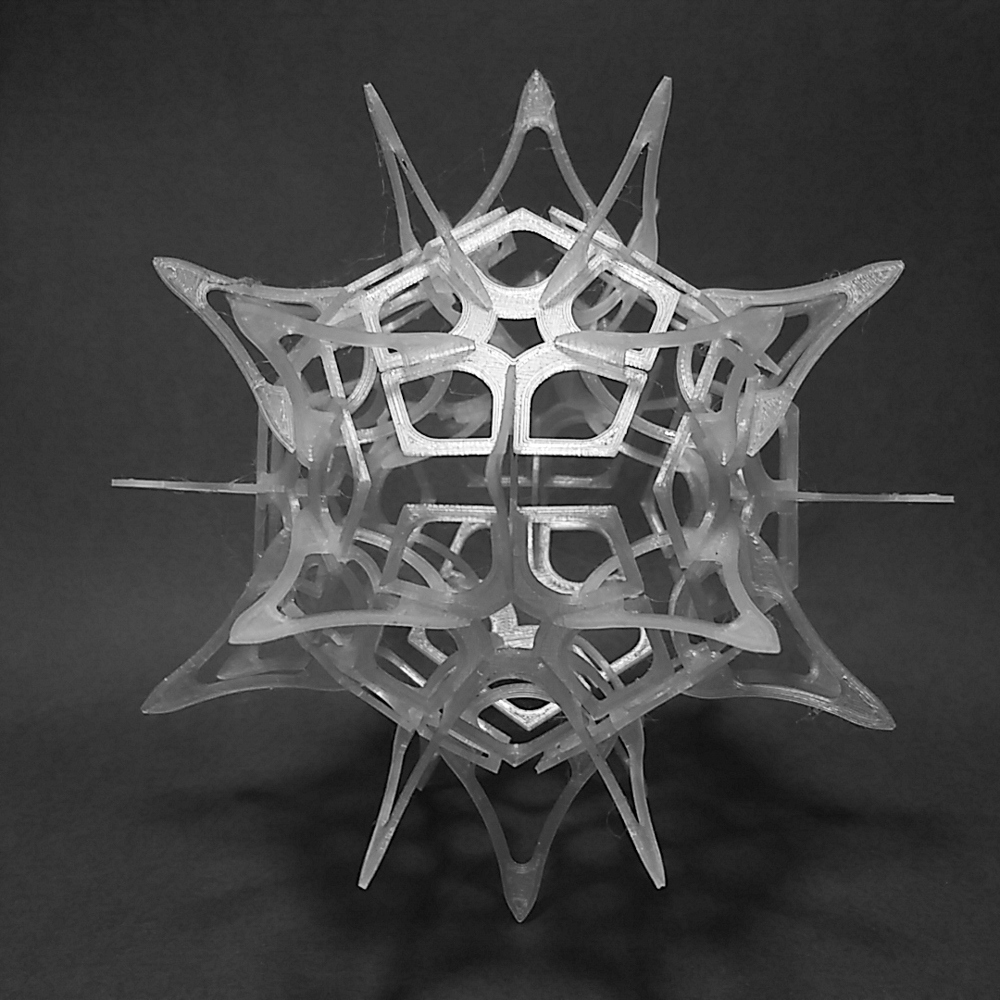
The Platonic, Archimedean and other polyhedra are a fascinating study, and a fertile base to start creating various forms from.
By their very properties, they lend themselves to being modular - identical faces, equal lengths, uniform angles, etc.
At the same time, 3D printing the entire solid is time consuming and wasteful. So I turned back to lasercutting principles, and 3D printed flat units that assemble into larger solids. This also limits the waste and damage arising form errors or misprints, since only a small unit is unusable rather than an entire print.
The Dodecahedron was my first attempt. I modeled the face unit as well as the spiky joint unit in Fusion.
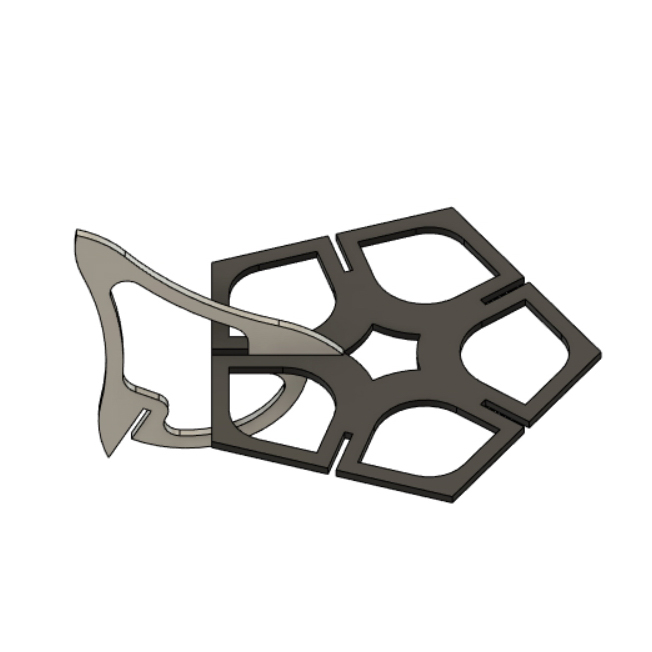
After printing a million of these - ok, 12 pentagons and 30 spikes, but it felt like a million (I love my 3D printer, but sometimes, what you really want is a lasercutter), I started to assemble them.
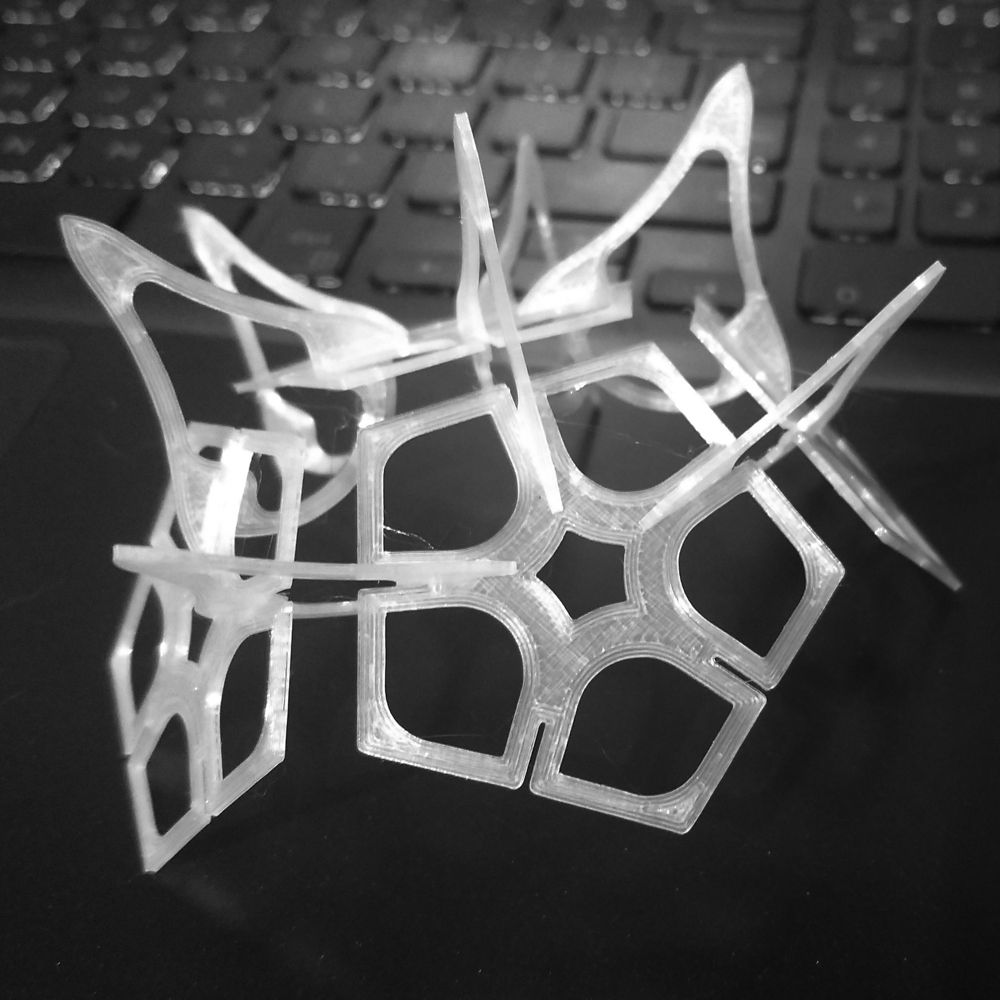
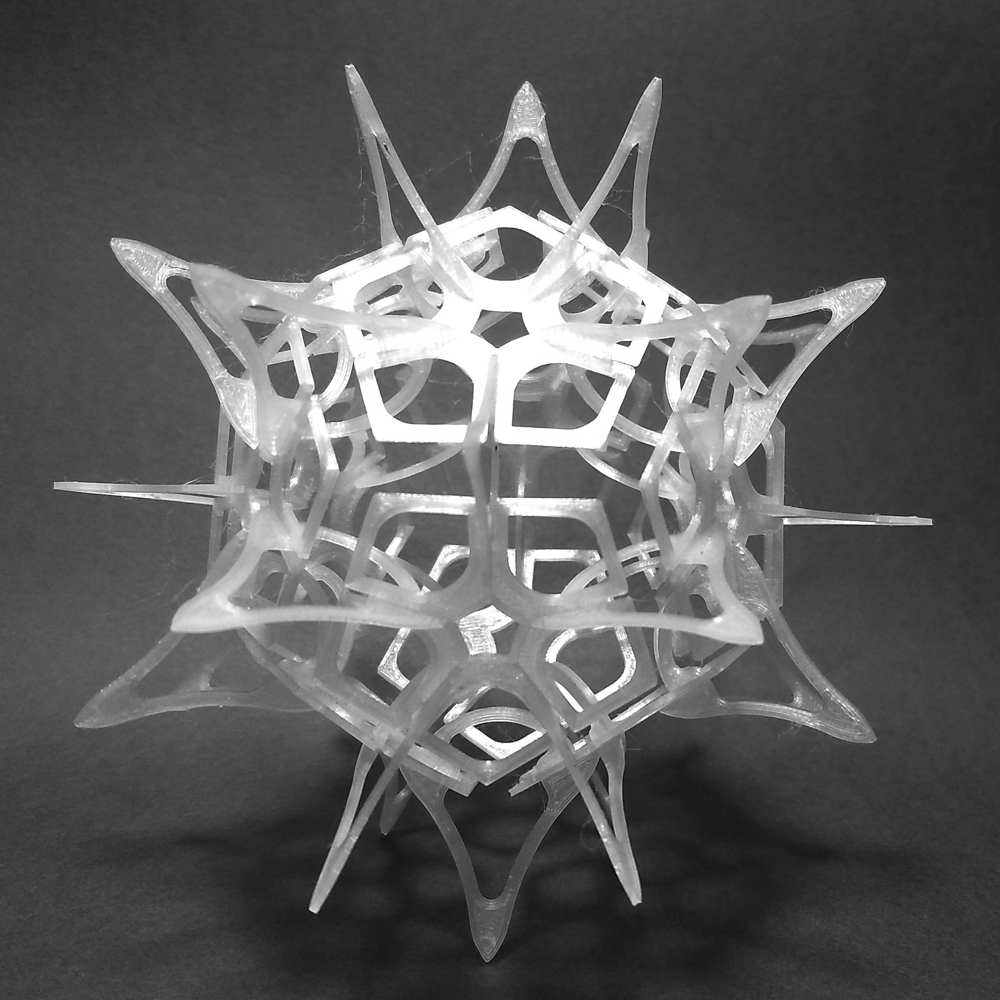
A spiky polyhedral Coronavirus abstraction if there ever was one.
Next, I decided to step beyond the flat-unit lasercutter-replacement paradigm and create something using a 3D unit. Based on an octahedron’s structure, each face has curvilinear forms rising out of the base.
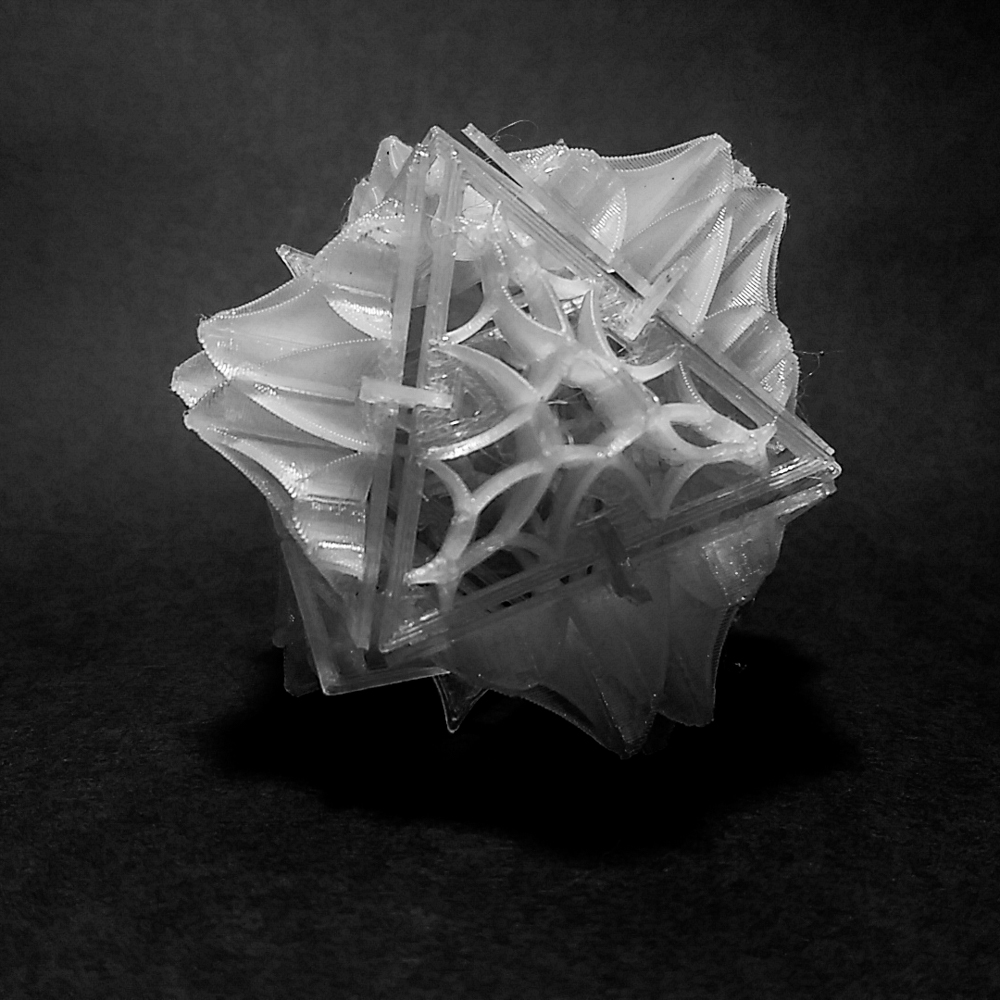
The curves are meant to match and flow across the edges as well, and they do, but the effect of the tessellating continuity falls short on an octahedron since the faces meet too sharply. On a dodecahedron or icosahedron, with more obtuse face angles, this would have a better effect.

